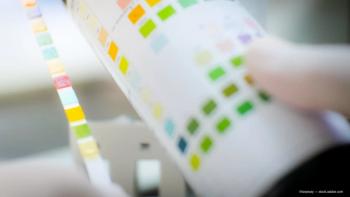
Vitreous is very stable in highly acidic and alkaline conditions
Vitreous has a greater buffering capacity than sodium chloride (0.9% NaCl), suggesting that it is able to remain more stable when acidic or alkaline pharmaceuticals are injected in microlitre amounts.
Vitreous has a greater buffering capacity than sodium chloride (0.9% NaCl), suggesting that it is able to remain more stable when acidic or alkaline pharmaceuticals are injected in microlitre amounts, according to a study published in the January issue of Retina.
Mandi Conway and colleagues from the University of Arizona College of Medicine, Department of Ophthalmology and Vision Science, Tucson, USA carried out a study to measure the buffering capacity of bovine vitreous to hydrogen chloride (HC1), sodium hydroxide (NaOH) and triamcinolone acetonide.
Vitreous was dissected from 10 bovine globes, homogenized and divided into 5 mL aliquots. The carbonate/bicarbonate buffer of the vitreous was maintained by performing all subsequent titrations under an atmosphere of 5% CO2/95% air. The pH was monitored during the addition of 0.1 N HC1, 0.1 N NaOH or 40 mg/mL triamcinolone acetonide to the vitreous sample; 0.9% NaC1 was used as a control.
The researchers found that the buffering capacity of bovine vitreous to HC1 was 10 times greater than that of 0.9% NaC1 and that the buffering capacity of vitreous to NaOH was four times greater than that of 0.9% NaC1. It was also discovered that bovine vitreous was able to resist pH changes from addition of triamcinolone acetonide at levels 20 time greater than commonly injected intravitreally.
The results of this study indicate that vitreous is more capable of remaining stable when acidic or alkaline pharmaceuticals are injected into it.
Newsletter
Get the essential updates shaping the future of pharma manufacturing and compliance—subscribe today to Pharmaceutical Technology and never miss a breakthrough.













































